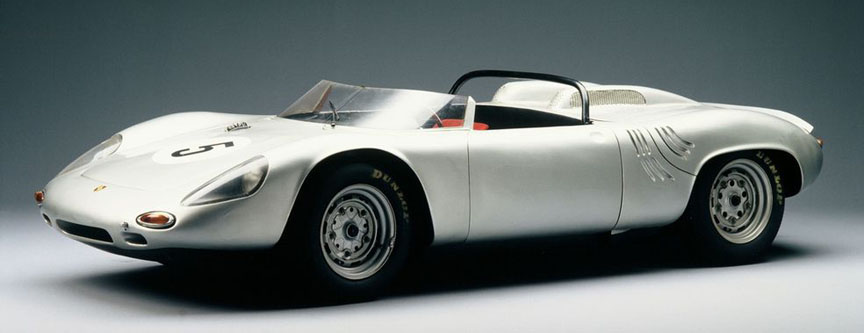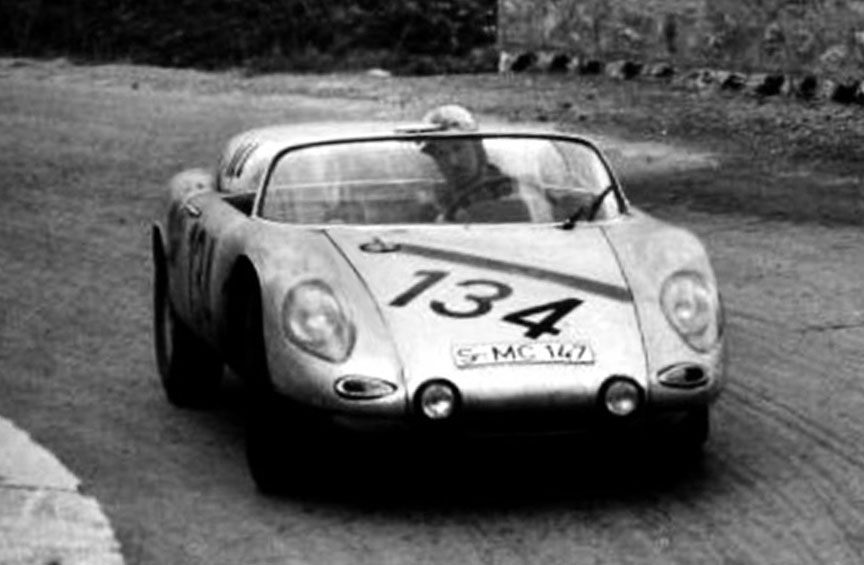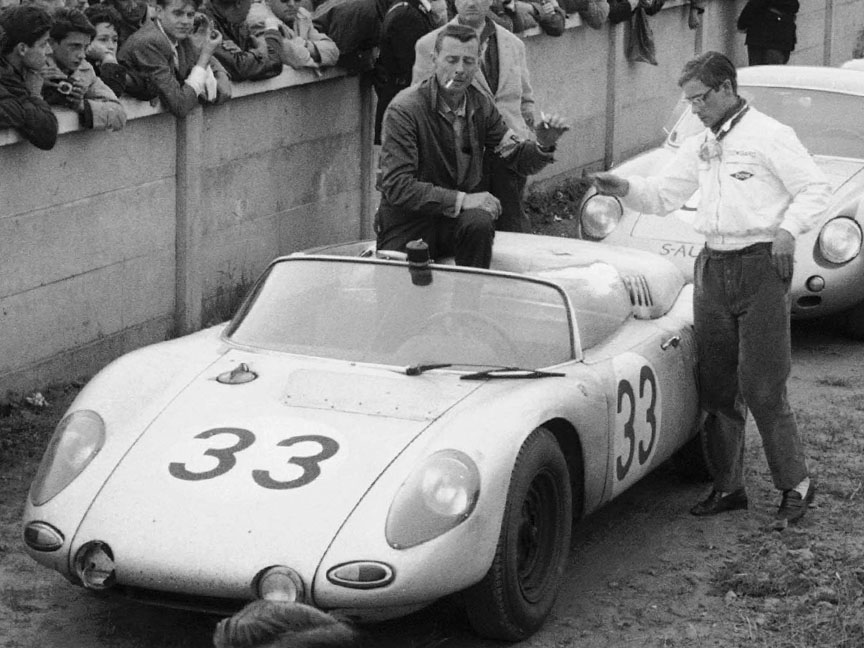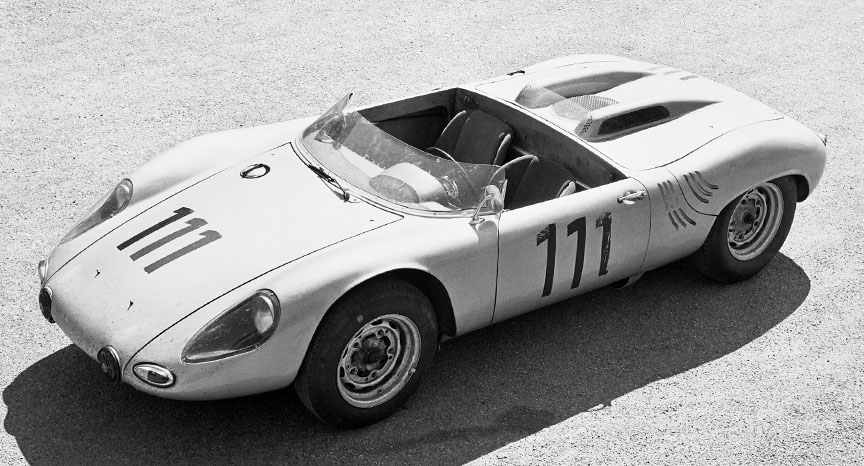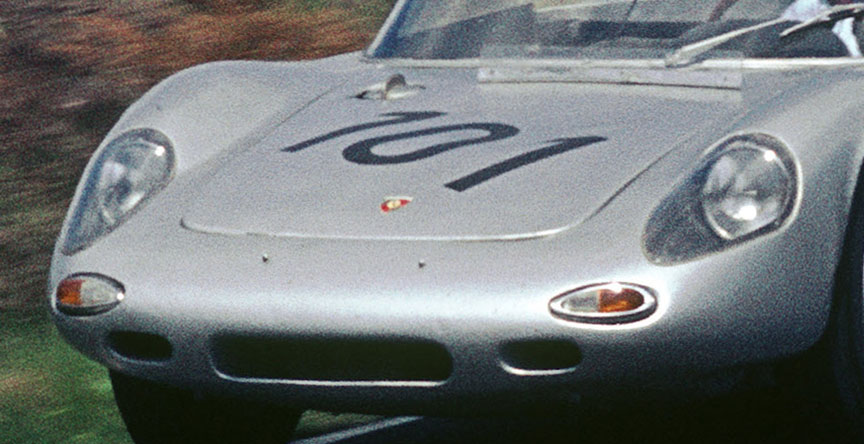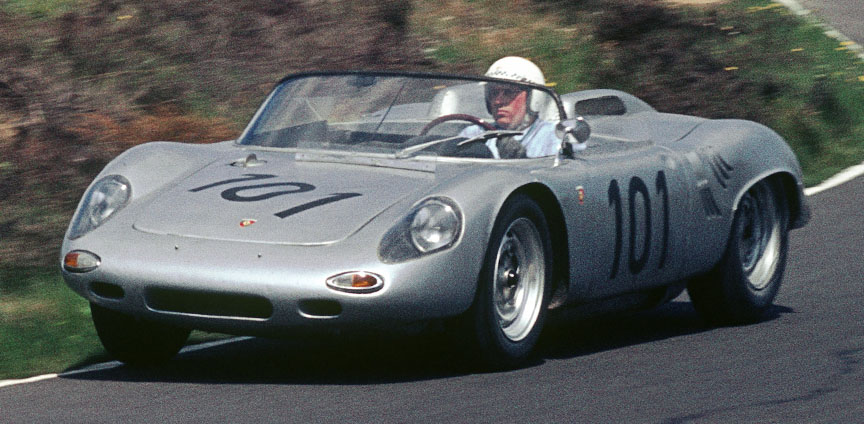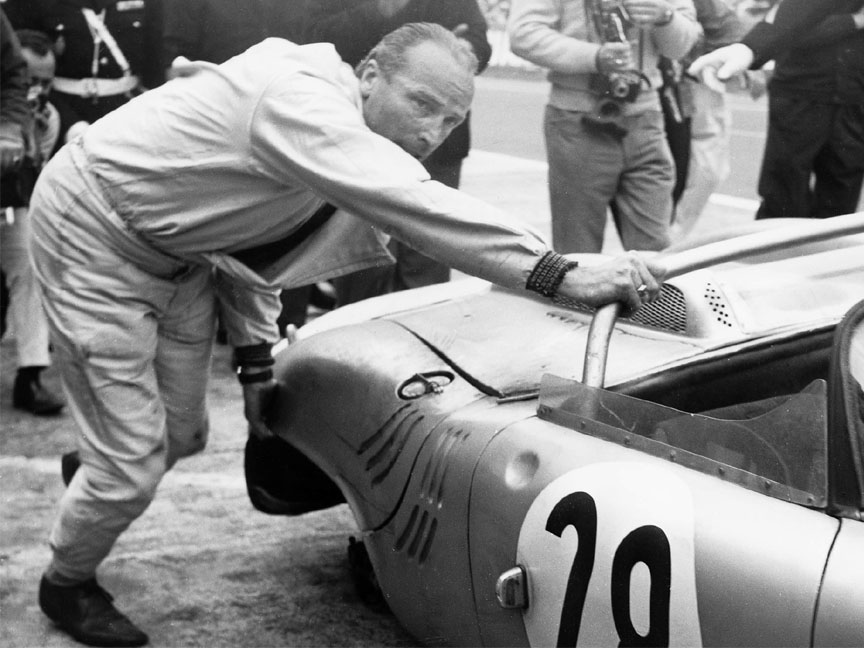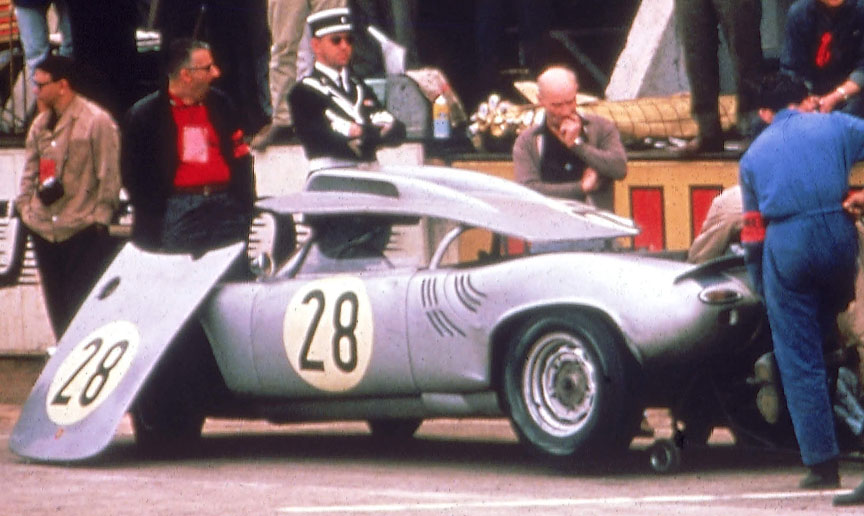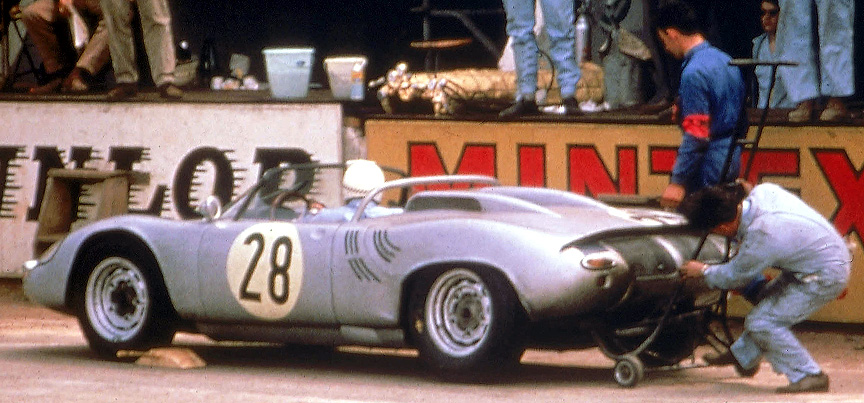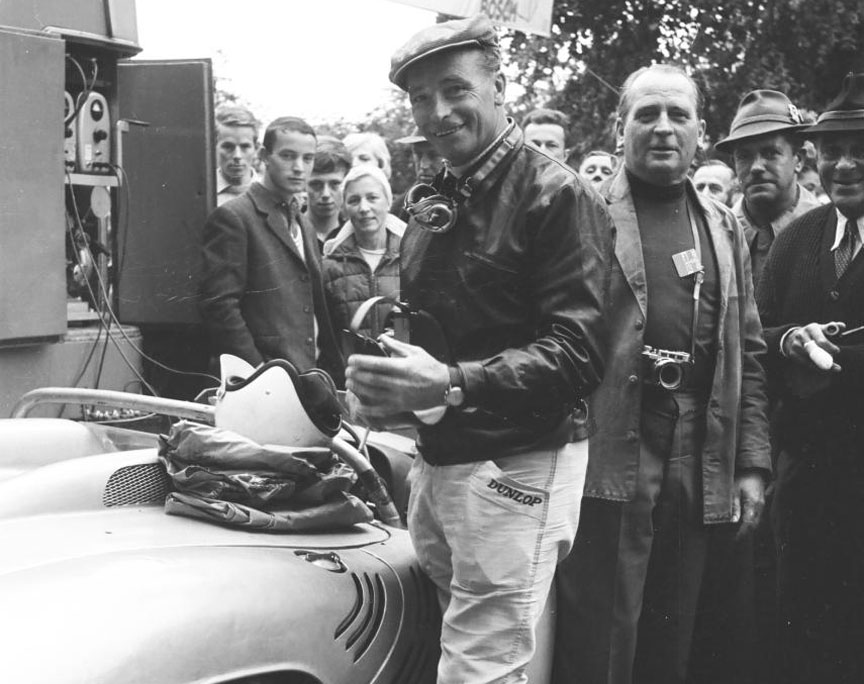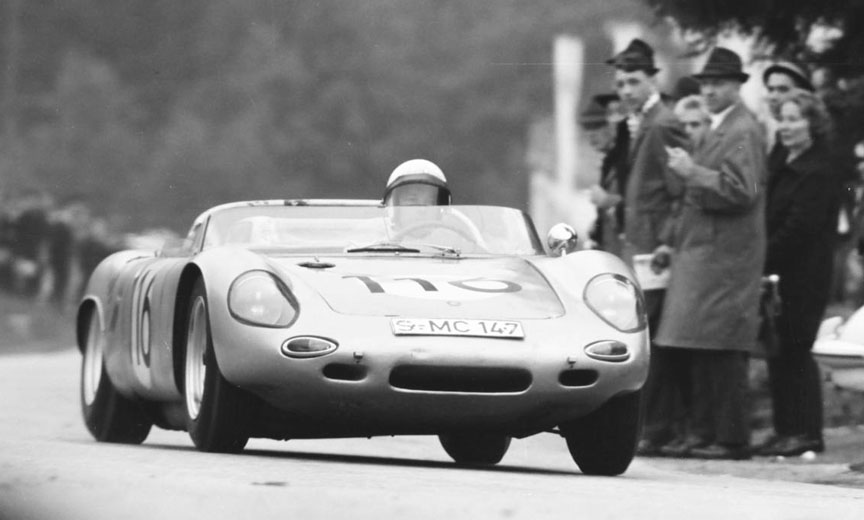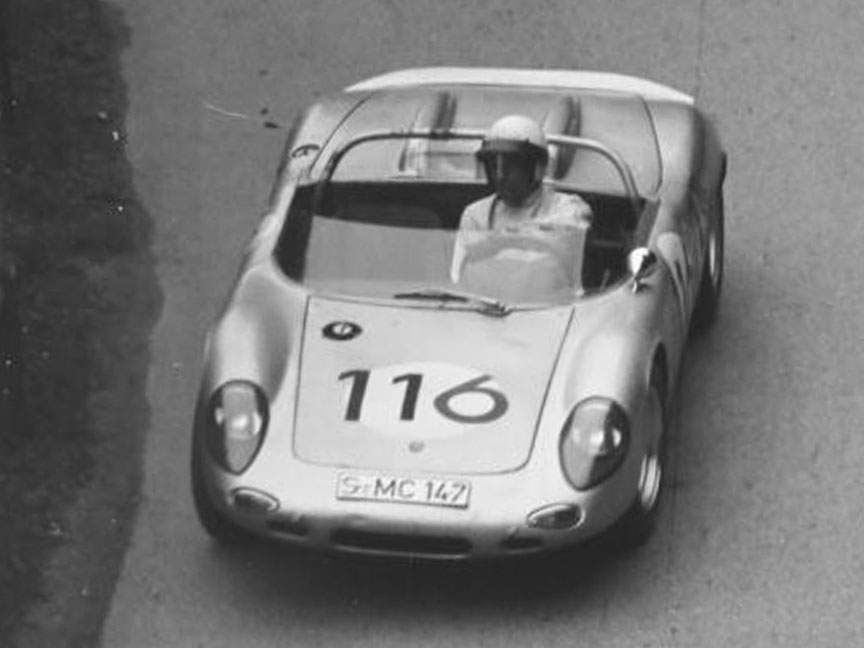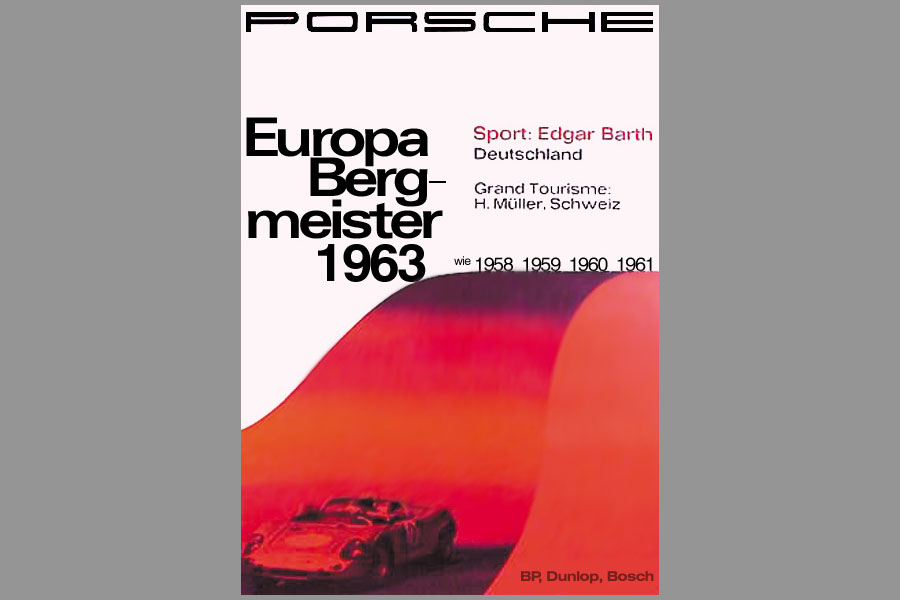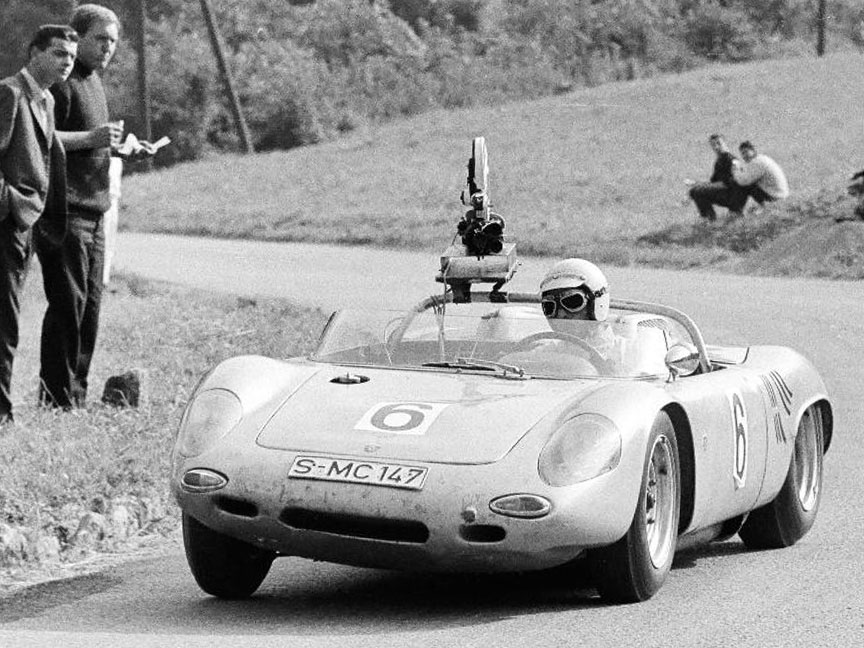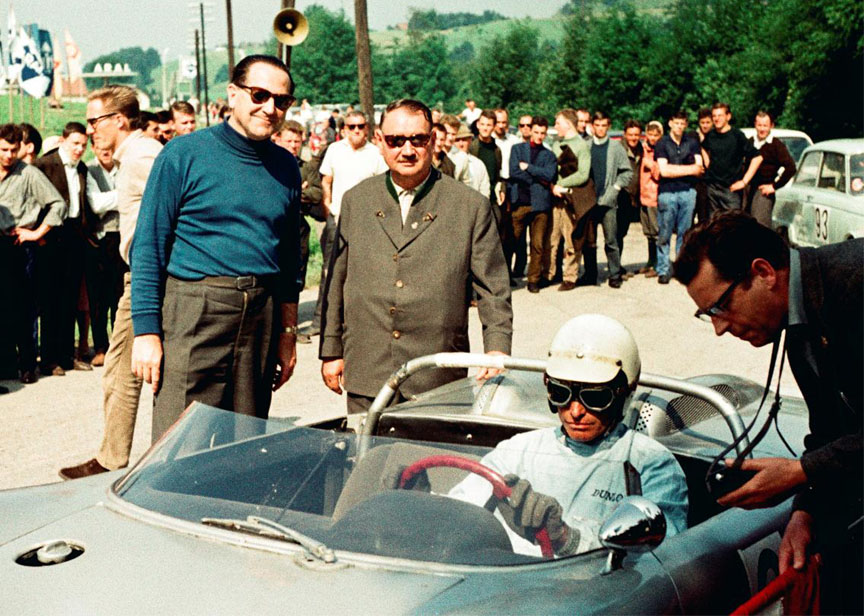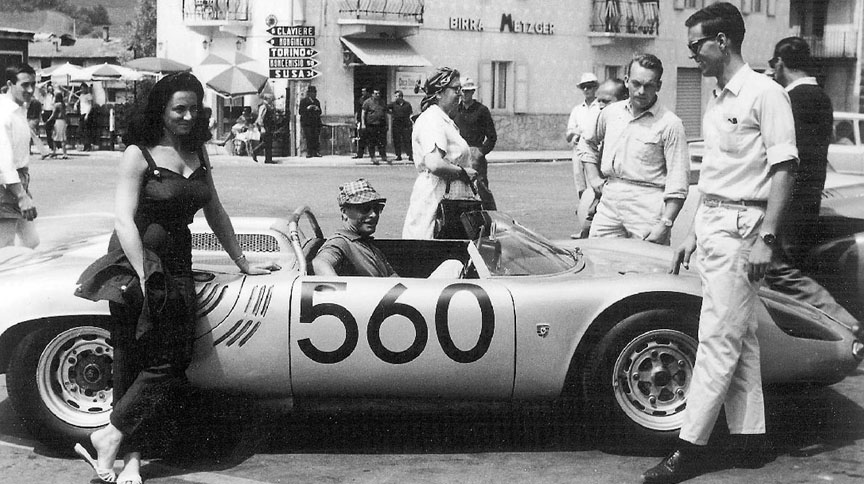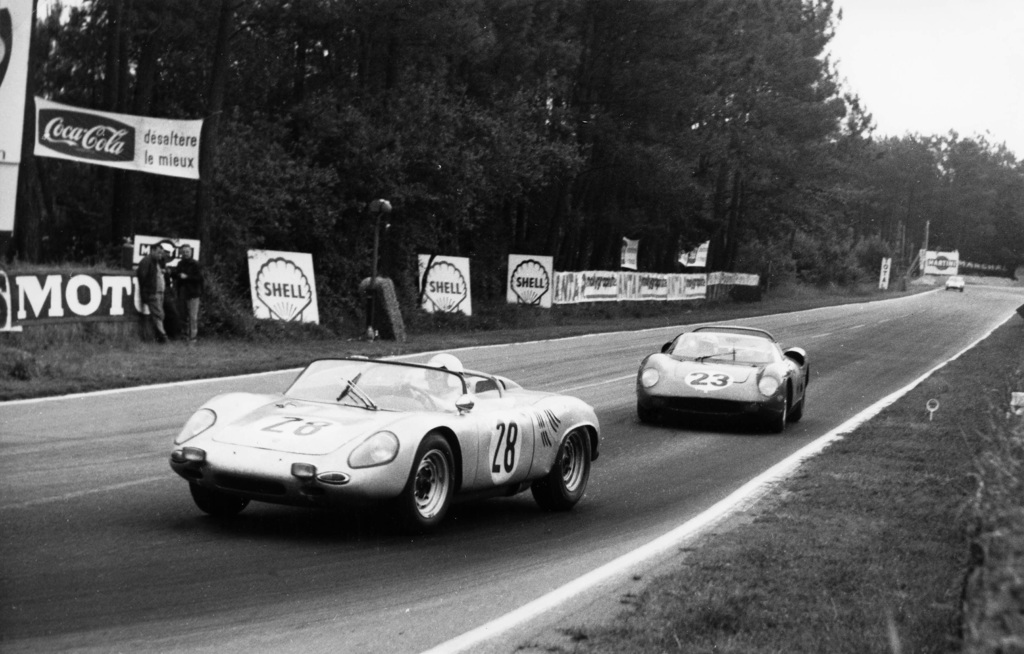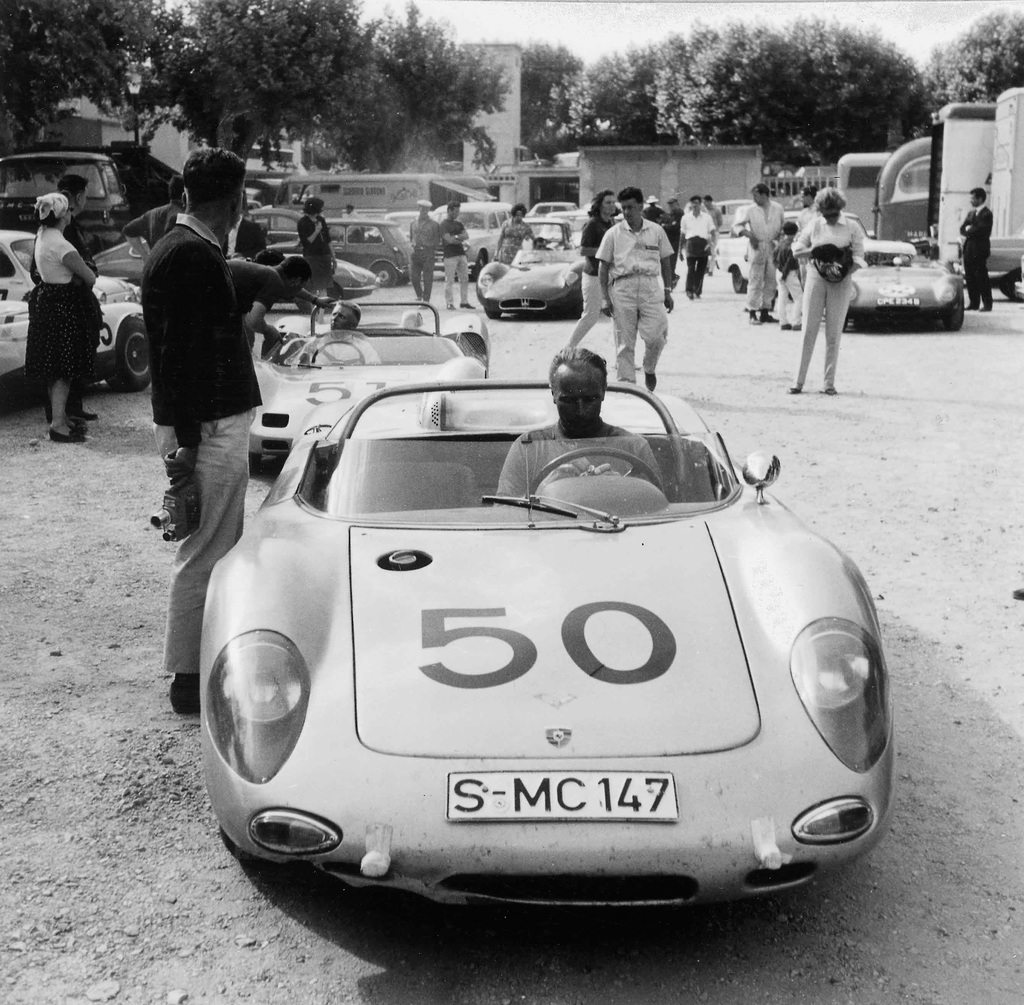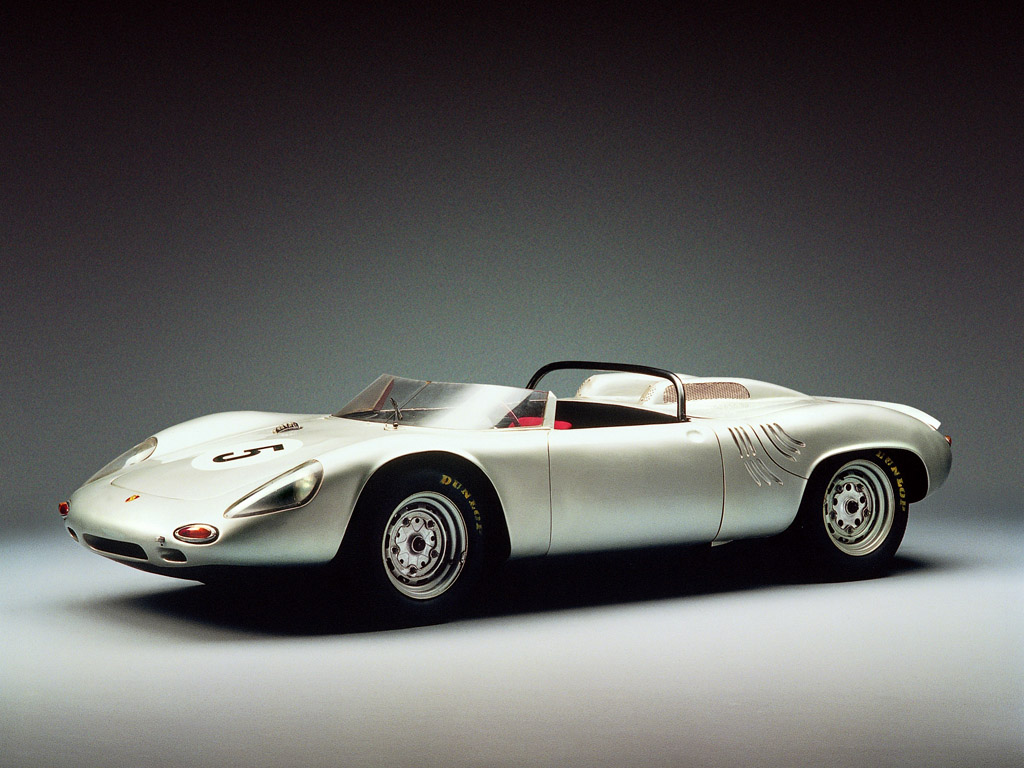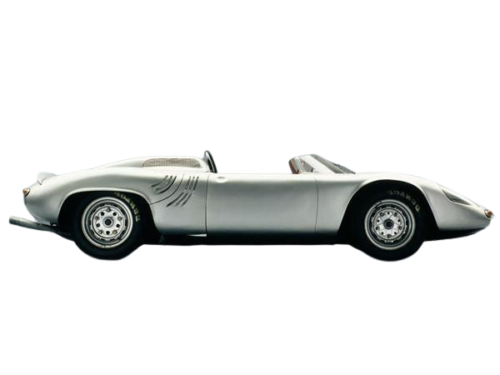Porsche 718/8 W-RS Spyder (1962 – 1964)
A Primer. The Porsche 718-047
So here is the story. The 1961 4-cylinder special Spyder is the car that became the 1962 8-cylinder W-RS Spyder. It started during the 1961 racing season, when three special 718 racing cars were created for the factory team. The bodies didn’t share any parts with the 718 RSK. Two of those special cars were built as coupés and one as a Spyder – with chassis number 718-047.
Although laid out to take the new eight cylinder engine, this Spyder, distinguished by its sleek aluminum body wrapped over a steel tube frame, celebrated its debut in the famous 1961 Targa Florio still powered by the proven four.
At the 1961 Targa Florio, this 2-litre 4-cylinder 4-cam Fuhrmann Carrera engine powered machine scored an impressive second place after a Ferrari with 2.4V6 engine. After the Targa Florio in April, the 718-047 competed at the Nürburgring 1000 km race in May and at the Le Mans in June where the 2-litre 4-cylinder 718-047 scored a class victory and 5th overall after 3-litre V12 engined Ferraris and a V12 Maserati. During four active years as a sports car prototype, this 718 RS Spyder, chassis number 718 047, visited virtually every race track in Europe and travelled as far afield as the Americas.
Becoming the Porsche 718/8 W-RS Spyder
For the 1962 season, the car got some changes and became known as the Porsche 718/8 W-RS Spyder. The biggest change was an engine swap. An eight-cylinder engine from the Porsche F1 race car, enlarged to 2.0 litres, replaced the four camshaft four-cylinder. Thus Grand Prix experience gave the GT prototype a fresh chance in the newly-prescribed World Endurance Trophy. Following sensational class victories in the 1962 Targa as well as the Nurburgring 1000km, where this car was third overall both times, Porsche captured second place in the World Cup for Speed and Endurance.
In the middle of 1962, the RS Spyder entered another arena: hillclimbs. Producing 210bhp, the 718/8 RS Spyder was to make its presence felt in the battle for the European Hillclimb Championship, previously the domain of private drivers with four-cylinder Spyders. This RS with Edgar Barth at the wheel set everything straight during the 1963 hillclimb season. Modified and boasting a further 30bhp, it brought Porsche and Barth the European Hillclimb Championship.
The heavily-used RS was an old friend to every mechanic in the racing department at Porsche by this time and they nicknamed it Grandmother in recognition of its unusually long racing life. In 1964 it extended its already legendary career further still with renewed success for Barth, who retained the European Hillclimb Championship in 1964.
The 718 W-RS and Racing
European Hill Climb Champion 1963-1964
The chassis and body of the 718-047 had been built for the 8-cylinder engine from day one, but received the flat-8 for the 1962 season. The car with the 176 kW/240 PS eight cylinder engine was now called as the W-RS (Welt-RennSport, World Racing) Spyder. The engine size remained at 2-litres. Drum brakes were replaced with annular disc brakes. The first outing with the 8-cylinder engine was at the 1962 Targa Florio, but accident stopped the race for 718-047. Up next was the Nürburgring 1000 km race which became a success – the 2-litre W-RS finished 3rd after larger engined Ferraris.
Although Porsche had registered the 718 W-RS Spyder and the 718 GTR Coupé with 8-cylinder engines for the 1962 Le Mans 24 hour race, their participation was postponed to 1963. The 718-047 spent the rest of the 1962 season at the European hill climb races. Heini Walter scored second at Mont Ventoux (France), Trento Bondone (Italy), Freiburg-Schauinsland (Germany) and third at Ollon Villars (Switzerland). Between September and December 1962, in less than 3 months the W-RS also raced in at least 7 races in Canada, USA, Puerto Rico and The Bahamas. The best results were 3rd (1st in 2-litre class) at GP Puerto Rico driven by Dan Gurney and 2nd (1st in 2-litre) at Bahamas Speed Weeks driven by Bob Holbert (same result in 2 different races).
For the 1963 season the W-RS got a new front end with smaller front lid. The lids and doors were now made of fibreglass, a first for Porsche.
At the 1963 Targa Florio the W-RS scored 7th while its sister car, the 8-cylinder 718 GTR Coupe, won. The 1963 Le Mans 24h race was completely dominated by Ferraris in addition to the misfortune of the W-RS.
At the 1963 Le Mans 24h race the 718-047 was the best Porsche (driven by Edgar Barth/Herbert Linge), but scored just 8th. As there was no 2-litre class for prototypes, the 718 W-RS competed in the 3-litre class and therefore didn’t get the class victory neither (all cars in front of it had 3-litre or larger engines).
Following the not so ideal start to the 1963 circuit racing season, the W-RS was taken back to the European Hill Climb Championship where it had performed well in 1962. And now it became unbeatable – Edgar Barth won the 1963 EHCC races at Trento Bondone (Italy), Cesana Sestrieres (Italy), Schauinsland (Germany), Ollon Villars (Switzerland) and Gaisberg (Austria). This naturally gave Barth the European Hill Climb Champion title.
In March 1964, the W-RS was shipped overseas again, to race at the Sebring 12 hour race. The car didn’t get a clean race and in reality it couldn’t rival the dominating Ferraris and Shelby Cobras with much larger engines. The W-RS was taken back to Europe to race at the Targa Florio, but technical problems stopped its conquest at the Italian classic.
It was time to take the W-RS back to where it was unbeatable – at the hill climb races. At the Mont Ventoux Barth scored second and won at Gaisberg. The following races were at Trento Bondone, Cesana Sestrieres and Freiburg-Schauinsland – Barth won all of these, like a year ago!
At the last race of the 1964 EHCC season at Sierre Montana Crans (Switzerland), failing fuel pump stopped the charge for W-RS, but it didn’t have impact on Barth – he had already scored enough points to win the 1964 European Hill Climb Championship, second year in a row.
As the 718-047 competed 4 racing seasons with more than 30 races in total, it was nicknamed as the “grandmother”. It belongs to Porsche Museum in Stuttgart.
A Visual History
